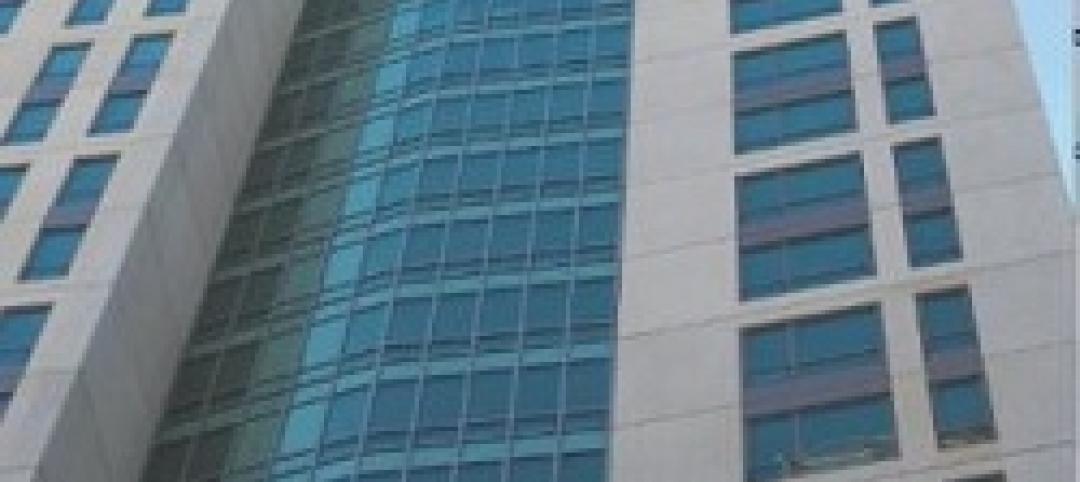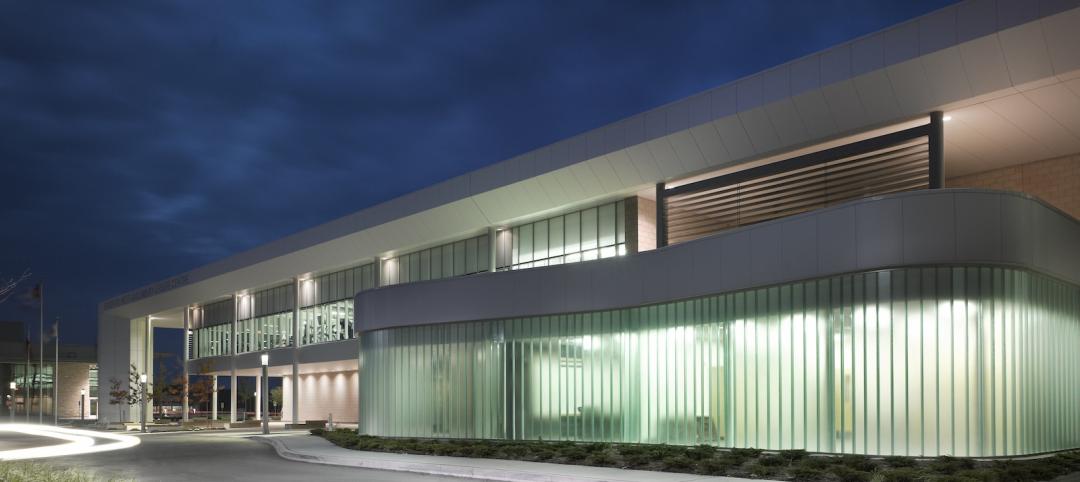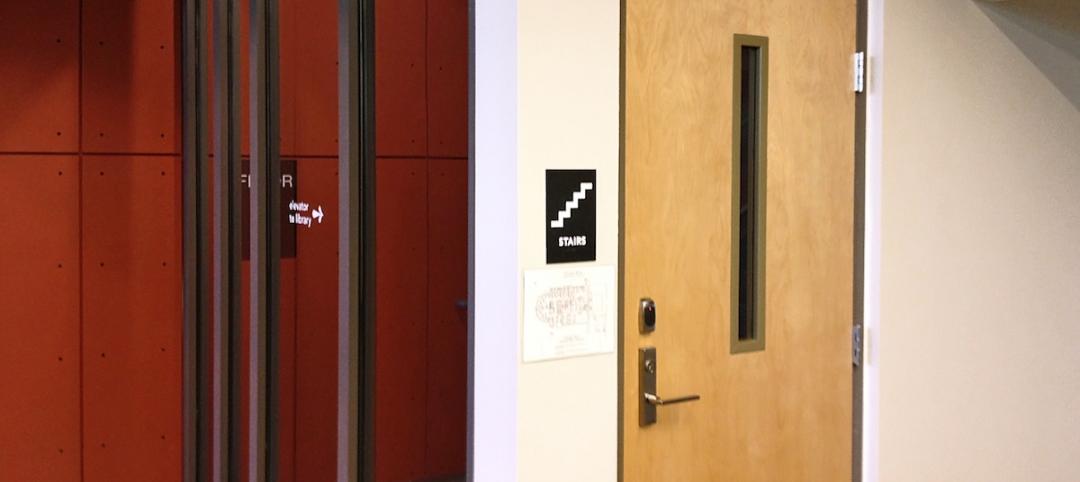Editor's note: This is a sponsored article. All text and images were provided by the sponsor company.
Project name: The Exploratorium in San Francisco
Architect: EHDD
General Contractor: Nibbi Brothers General Contractors
Glazing Contractor: Architectural Glass and Aluminum
Products used: SuperLite II-XL 45 IGU in SAFTIfire HM Framing
The newly-opened Exploratorium has brought energy and excitement to the city’s bustling waterfront. EHDD transformed the historic Pier 15, built in 1915, to a 330,000 square foot indoor and outdoor campus, being touted as the largest net-zero building in the city and potentially the largest net-zero museum in the world.
EHDD kept the original structure and concrete cladding of the building but removed most of the loading dock doors on the north and south sides of the pier, replacing them with glazed door assemblies in order to bring in natural light and provide convenient access between the inside space and the outdoor exhibits. By using glass, the architects were also able to make a connection to the outdoors, with the south side offering views of the Bay Bridge and north side offering views of the San Francisco skyline – putting the city itself and its iconic landmarks on display.
However, the location of the Exploratorium’s new home posed a unique challenge. “The exterior portions of the piers are designed to function similar to rated interior egress corridors in the event of a fire,” says Katherine Miller, the project architect for the Exploratorium. Not wanting to sacrifice daylight and views, the designers opted to use fire rated glass for the exterior doors so that people evacuating the site via the piers will be protected in case a fire breaks out from inside the building.
SAFTI FIRST supplied a total of 19 pairs of 45-minute steel doors – 11 pairs on north side and 8 pairs on the south side – using SuperLite II-XL 45 IGU in SAFTIfire HM Framing. The SuperLite II-XL 45 glazing was insulated with tempered low-e glazing on the #2 surface for energy efficiency. The frames were painted to match the adjacent non-rated systems.
8 pairs of SuperLite II-XL 45 IGU in HM Door Framing on the south side provides easy access to the outdoor exhibits and views of the Bay Bridge.
SuperLite II-XL 45 is a clear, fire resistive glazing product tested to ASTM E-119/NFPA 251/UL 263 with hose stream and meets NFPA 252/257 for use in door and window assemblies. It meets CPSC Cat. II impact safety and is available in large sizes, which was critical because some of the doors had a day light opening of 97 inches high.
“SAFTI FIRST was able to achieve the desired glass heights, and was less expensive than other options,” adds Katherine. SuperLite II-XL 45 has the largest sizes for clear 45 minute fire and safety rated glazing, with a maximum clear view area of 4,952 square inches and a maximum clear view height or width 124 inches. It is made here in the USA at SAFTI FIRST’s manufacturing facility in California, ensuring competitive pricing versus fire resistive multilaminates or fire protective filmed or laminated ceramics, which are either imported from Europe of Asia.
Aside from large sizes and competitive pricing, SuperLite II-XL 45 was chosen because “it was a good color match to the adjacent clear low-e coated glass,” says Katherine. SuperLite II-XL 45 has superior optical clarity and does not have any amber tints typically seen in fire rated ceramics.
Further expansion is planned for the neighboring Pier 17. For now, inquisitive minds of any age can satisfy their curiosities at the Exploratorium’s new spectacular – and safe – space along the embarcadero.
Related Stories
Sponsored | | Apr 23, 2014
Ridgewood High satisfies privacy, daylight and code requirements with fire rated glass
For a recent renovation of a stairwell and exit corridors at Ridgewood High School in Norridge, Ill., the design team specified SuperLite II-XL 60 in GPX Framing for its optical clarity, storefront-like appearance, and high STC ratings.
| Apr 8, 2014
Fire resistive curtain wall helps The Kensington meet property line requirements
The majority of fire rated glazing applications occur inside a building to allow occupants to exit the building safely or provide an area of refuge during a fire. But what happens when the threat of fire comes from the outside? This was the case for The Kensington, a mixed-use residential building in Boston.
| Apr 2, 2014
8 tips for avoiding thermal bridges in window applications
Aligning thermal breaks and applying air barriers are among the top design and installation tricks recommended by building enclosure experts.
Sponsored | | Mar 30, 2014
Ontario Leisure Centre stays ahead of the curve with channel glass
The new Bradford West Gwillimbury Leisure Centre features a 1,400-sf serpentine channel glass wall that delivers dramatic visual appeal for its residents.
| Mar 7, 2014
Thom Mayne's high-tech Emerson College LA campus opens in Hollywood [slideshow]
The $85 million, 10-story vertical campus takes the shape of a massive, shimmering aircraft hangar, housing a sculptural, glass-and-aluminum base building.
| Feb 27, 2014
12 facts about heat-treated glass: Why stronger isn’t always better
Glass is heat-treated for two reasons: the first is to increase its strength to resist external stresses such as wind and snow loads, or thermal loads caused by the sun’s energy. The second is to temper glass so that it meets safety glazing requirements defined by applicable codes or federal standards.
| Feb 27, 2014
PPG earns DOE funding to develop dynamically responsive IR window coating Technology aims to maintain daylighting, control solar heat gain
PPG Industries’ flat glass business has received $312,000 from the U.S. Department of Energy (DOE) to develop a dynamically responsive infrared (IR) window coating that will block heat in the summer to reduce air-conditioning costs and transmit solar heat in the winter to reduce heating costs.
| Feb 5, 2014
PPG creates new BIM library, adds custom BIM file creation to tool
PPG Industries announced that it has created a new library of building information and modeling (BIM) files, and that architects and specifiers can now use PPG Glass eVIEW to generate custom BIM files for any conceivable PPG glass configuration.
| Feb 5, 2014
7 towers that define the 'skinny skyscraper' boom [slideshow]
Recent advancements in structural design, combined with the loosening of density and zoning requirements, has opened the door for the so-called "superslim skyscraper."
Sponsored | | Jan 30, 2014
Transparent, fire rated stairwell enhances design of renovated Cincinnati Art Museum
When the Cincinnati Art Museum embarked on an $11 million renovation, the architects wanted the entrance and main stair to be as inviting as possible. Transparent, fire rated glazing from SAFTI FIRST was a key component of the design solution.














